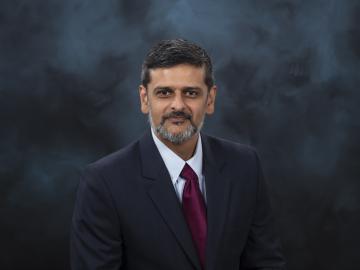Filter News
Area of Research
- Advanced Manufacturing (4)
- Biological Systems (1)
- Biology and Environment (30)
- Building Technologies (1)
- Clean Energy (66)
- Climate and Environmental Systems (1)
- Computational Engineering (3)
- Computer Science (15)
- Electricity and Smart Grid (2)
- Fuel Cycle Science and Technology (1)
- Functional Materials for Energy (1)
- Fusion and Fission (13)
- Fusion Energy (9)
- Isotope Development and Production (1)
- Isotopes (2)
- Materials (27)
- Materials for Computing (3)
- Mathematics (1)
- National Security (18)
- Neutron Science (13)
- Nuclear Science and Technology (22)
- Nuclear Systems Modeling, Simulation and Validation (2)
- Quantum information Science (5)
- Sensors and Controls (1)
- Supercomputing (62)
News Type
News Topics
- (-) Advanced Reactors (25)
- (-) Artificial Intelligence (44)
- (-) Bioenergy (40)
- (-) Computer Science (101)
- (-) Grid (38)
- (-) Machine Learning (24)
- (-) Nuclear Energy (51)
- 3-D Printing/Advanced Manufacturing (81)
- Big Data (28)
- Biology (40)
- Biomedical (29)
- Biotechnology (10)
- Buildings (35)
- Chemical Sciences (42)
- Clean Water (14)
- Climate Change (47)
- Composites (19)
- Coronavirus (28)
- Critical Materials (23)
- Cybersecurity (21)
- Decarbonization (30)
- Education (3)
- Element Discovery (1)
- Energy Storage (75)
- Environment (88)
- Exascale Computing (13)
- Fossil Energy (1)
- Frontier (17)
- Fusion (23)
- High-Performance Computing (42)
- Hydropower (6)
- Irradiation (3)
- Isotopes (25)
- ITER (5)
- Materials (104)
- Materials Science (87)
- Mathematics (1)
- Mercury (5)
- Microscopy (29)
- Molten Salt (7)
- Nanotechnology (40)
- National Security (23)
- Net Zero (5)
- Neutron Science (83)
- Partnerships (29)
- Physics (28)
- Polymers (22)
- Quantum Computing (14)
- Quantum Science (38)
- Renewable Energy (1)
- Security (12)
- Simulation (18)
- Software (1)
- Space Exploration (13)
- Statistics (3)
- Summit (27)
- Sustainable Energy (81)
- Transformational Challenge Reactor (4)
- Transportation (65)
Media Contacts

An Oak Ridge National Laboratory team revealed how chemical species form in a highly reactive molten salt mixture of aluminum chloride and potassium chloride by unraveling vibrational signatures and observing ion exchanges.

Anuj J. Kapadia, who leads the Advanced Computing in Health Sciences Section at the Department of Energy’s Oak Ridge National Laboratory, was named a 2024 Fellow by the American Association of Physicists in Medicine.

Phani Ratna Vanamali Marthi, an R&D associate in the Power Systems Resilience group at ORNL, has been elevated to the grade of senior member of the Institute of Electrical and Electronics Engineers, the world’s largest technical professional organization

Erin Webb, lead for the Bioresources Science and Engineering group at Oak Ridge National Laboratory, has been elected a Fellow of the American Society of Agricultural and Biological Engineers — the society’s highest honor.

Vanderbilt University and ORNL announced a partnership to develop training, testing and evaluation methods that will accelerate the Department of Defense’s adoption of AI-based systems in operational environments.

Researchers at ORNL are developing battery technologies to fight climate change in two ways, by expanding the use of renewable energy and capturing airborne carbon dioxide.

Scientists at ORNL completed a study of how well vegetation survived extreme heat events in both urban and rural communities across the country in recent years. The analysis informs pathways for climate mitigation, including ways to reduce the effect of urban heat islands.

ORNL has named W. David Pointer, director of the Nuclear Energy and Fuel Cycle Division in ORNL’s Fusion and Fission Energy and Science Directorate. As director, Pointer will lead a world-class team of ORNL research professionals focused on addressing the challenges and opportunities presented by current and future nuclear energy systems.

Groundwater withdrawals are expected to peak in about one-third of the world’s basins by 2050, potentially triggering significant trade and agriculture shifts, a new analysis finds.

Forrest Hoffman, a distinguished scientist at the Department of Energy’s Oak Ridge National Laboratory, has been named a senior member of the Institute of Electrical and Electronics Engineers, the world’s largest organization for technical professionals.




